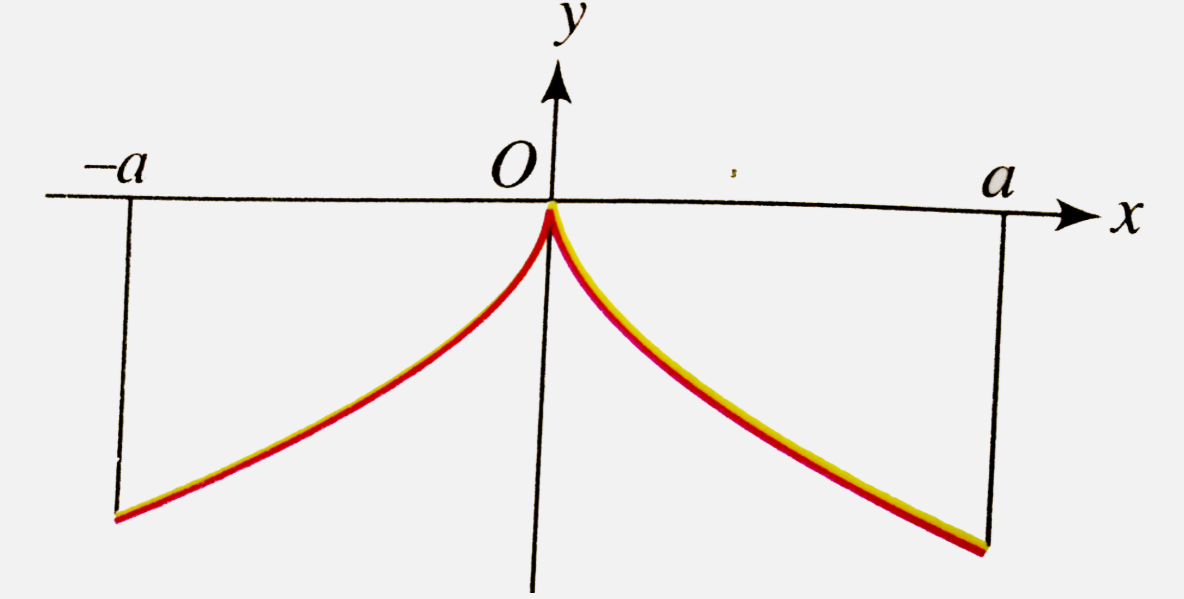Draw the graph of y=sin(sin−1x) or y=cos(cos−1x)Solution in Bengali
y=sin(sin−1y)
Clearly, the domain of the function is [-1,1].
Now −1≤x≤1
∴ π2≤sin−1x≤π2
∴ −1≤sin(sin−1x)≤1
Also f(x)=sin(sin−1x)=x,for x∈[−1,1]
y=cos(cos−1x)
Clearly the domin of the function is [-1, 1].
Now −1≤x≤1
∴ 0≤cos−1x≤π
∴ −1≤con(cos−1x)≤1
Also f(x)=cos(cos−1x)=x,forx∈[−1,1]
Thus, the grah of both the functions is t=xforx in [-1, 1]

Topper's Solved these Questions
- GRAPH OF INVERSE TRIGONOMETRIC FUNCTIONSBOOK - CENGAGE PUBLICATIONCHAPTER - GRAPH OF INVERSE TRIGONOMETRIC FUNCTIONSEXERCISE - Exercises
18 Videos
- GETTING STARTED WITH GRAPHSBOOK - CENGAGE PUBLICATIONCHAPTER - GETTING STARTED WITH GRAPHSEXERCISE - Exercises 1.18
1 Videos
- GRAPHICAL TRANSFORMATIONSBOOK - CENGAGE PUBLICATIONCHAPTER - GRAPHICAL TRANSFORMATIONSEXERCISE - ILLUSTRATION
78 Videos
Similar Questions
Draw the graph of y=tan−1x−cot−1x.
View SolutionFollowing is the graph of y = f'(x) and f(0) = 0 .

(a) What type of function y = f'(x) is ? Odd or even?
(b) What type of function y = f(x) is ? Odd or even?
(c) What is the value of ∫a−af(x)dx?
(d) Has y = f(x) point of inflection?
(e) What is the nature of y = f(x)? Monotonic or non-monotonic?
View SolutionPlot y=|x|,y+x−2∣,andy=|x|2∣
View SolutionDraw the graph of y= [sinx], y= [cosx]
View SolutionDraw the graph of following function y = cos ^ (- 1) (cos x) y = sin ^ (- 1) (sin x) y = cos (cos ^ (- 1) x) y = sin (sin ^ (- 1) x)
View Solutioncos x + cos y = (1) / (3), sin x + sin y = (1) / (4) rArr sin (x + y)
View SolutionDraw the graph of y=tan−1x+cos−1x+sin−1x.
View SolutionDraw the graph of y=sinx+cosx,x∈[0,2π].
View SolutionDraw the graph of y=sin−1x+cos−1x.
View SolutionDraw the graph of y=sin(sin−1x) or y=cos(cos−1x)
View SolutionIf cosx+cosy=1/3,sinx+siny=1/4 then cos(x+y)=
View SolutionDraw the graph of y=tan−1x+cos−1x+sin−1x.
View SolutionDraw the graph of y=sinx+cosx,x∈[0,2π].
View SolutionDraw the graph of y=sin−1x+cos−1x.
View SolutionDraw the graph of y=sin(sin−1x) or y=cos(cos−1x)
View SolutionDraw the graph of y=tan^(-1)x+cos^(-1)x+sin^(-1)x .
View Solution
